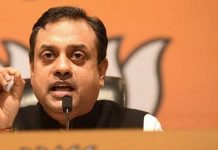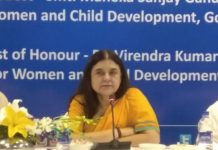For the human race to survive, Mahatma Gandhi would always insist, its women must eventually take charge of the affairs of men. In the last 150 years, incredibly courageous women’s rights movements have waged epochal battles across the world, most notably in the US, to wrest parity from generations of chauvinistic men, bringing themselves adult suffrage, working rights and numerous social, political and economic benefits. So, for India to become one of the world’s first big democracies to reserve for women one-third of all its 545 Lok Sabha seats and 4,000-odd legislative seats across 28 states is a powerful moment in history. Why then oppose the Women’s Reservation Bill? Are these misogynists foolishly ranged against the tide of history, or feudal lords threatened to extinction by an idea whose time has come?
First, it needs to be asked why the UPA — which has shown little urgency during its six years in power to bring substantive policies to improve the well-being of India’s more than half-a-billion women — should so aggressively push for this Bill to become law, without allowing any vigorous debates within and outside Parliament, going to the extent of issuing a whip to force its MPs to toe the line. It is stunning that the Bill — or the government — has not disclosed how the reservation for women would translate into tangible benefits for women, society and the nation. Finally, why is the government refusing to allow a sub-quota for the backward castes, as the opponents of the Bill have demanded?
The real story behind both the support for and the opposition to the Bill, lies in India’s complex castebased politics. Typically, the upper-caste dominated parties, such as the Congress, the BJP and even the Left, back the Bill. Whereas parties peopled by the middle and the lower castes, such as the RJD, the JD(U) and the Samajwadi Party, are opposed to it. As it were, the backward and the lowest Hindu castes, traditional supporters of the Congress, began deserting it in the 1980s. Their honeymoon with the BJP, too, began tapering off during the 1990s. The emergence of backward caste leaders such as Mulayam Singh Yadav, Lalu Prasad Yadav, Kanshi Ram and Mayawati over the last 30 years saw these lower segments of society become a formidable political force against the Congress and the BJP.
Since 1989, no party has won absolute majority in seven general elections. Instead, backward caste and Dalit leaders have forced coalition politics on the socalled national parties, the Congress and the BJP. There seems no formula in sight for the upper caste leadership of the Congress and the BJP to contain and possibly reverse the charge of the backward caste political parties. Because women’s struggles are yet to fully emerge among the backward castes as a social movement, it is plain obvious that in an open contest on seats reserved for general women, there won’t be enough backward caste women to take on the upper caste women. This is how the BJP and the Congress hope to increase their numbers in the Parliament at the next elections.
Of course, there’s the worrying issue of declining merit in Parliament, which has become a rubber stamp to approve any government policy, because the antidefection law forces MPs to toe the party line. In the absence of genuine grassroots women leaders, a large number of them elected in the reserved quota will have little connect with the masses and may well make Parliament even more a body of yes-men and yes-women, than a true representative of 1.1 billion people.









